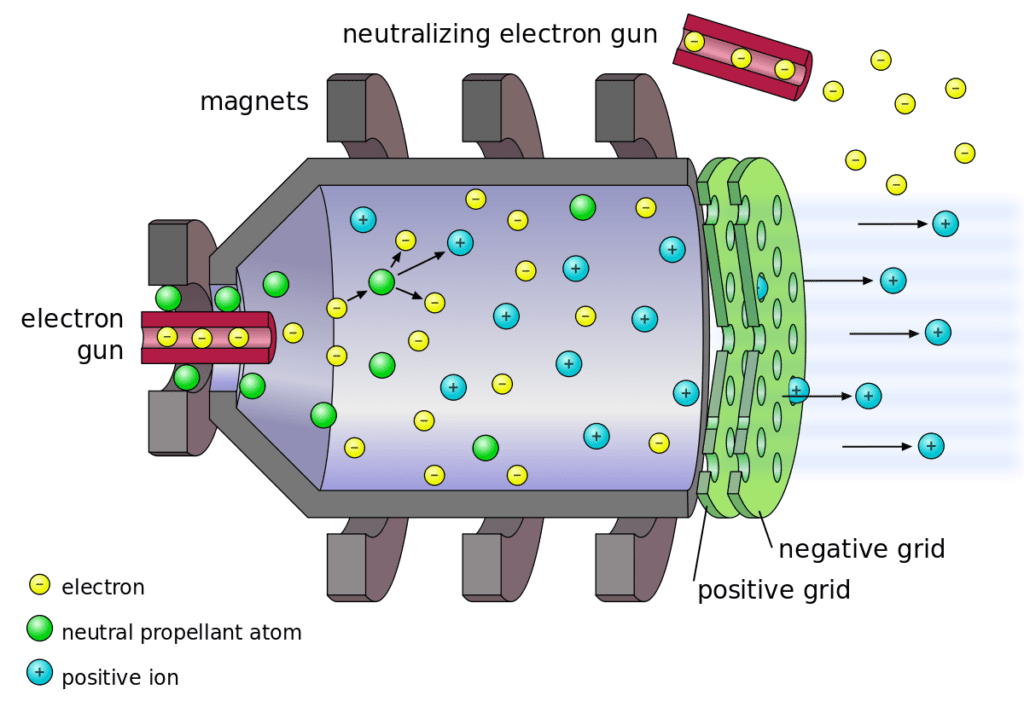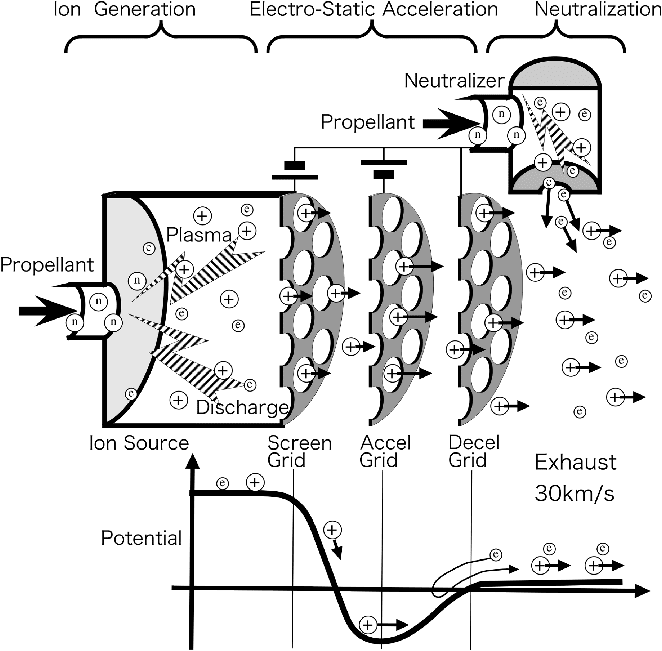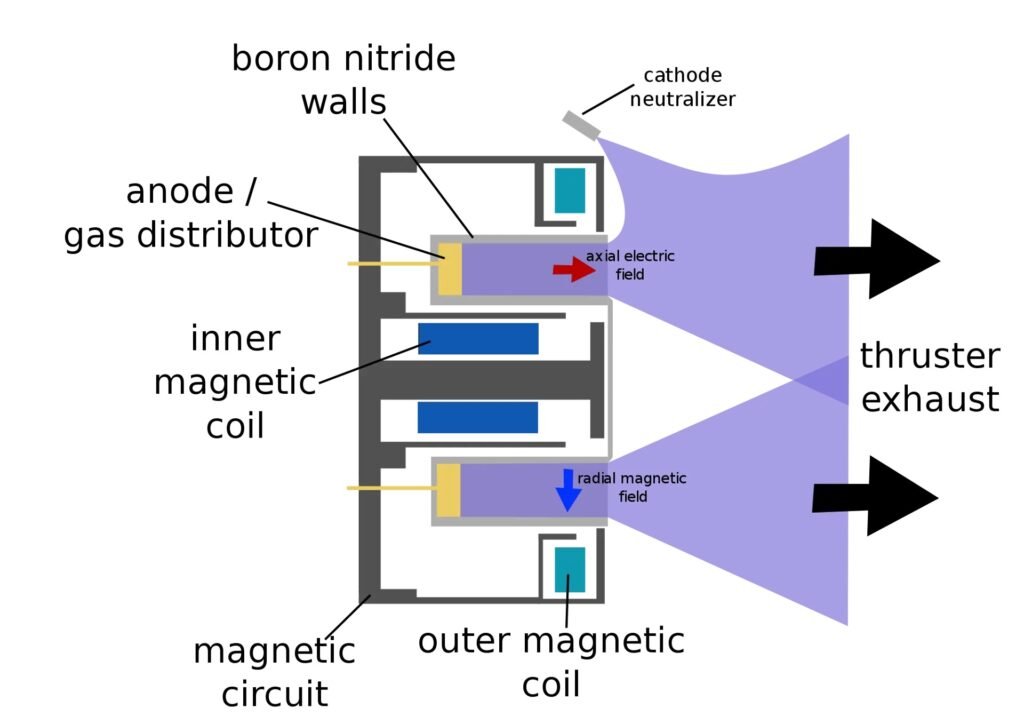The ion engine, used for decades, is the most efficient way to boost a spacecraft for space exploration.
Ion engine operation
Every thrust system uses Newton’s third law, a force created in one direction produces an equal force in the opposite direction. In an ion engine, ions are accelerated by an electric field, and the force caused by ion acceleration creates a reaction force, that boosts the probe or satellite.
Ionization chamber
Xenon gas deposited in tanks is injected inside a chamber, and a hollow cathode (electron gun), connected to a power source with high voltage and current, emits electrons to the ionization chamber, the formers collide with xenon atoms and the latters become ions with positive charge, by that, with lack of electrons. In addition to liberate more electrons. Therefore, a plasma is formed, the fourth state of matter, inside the chamber.

On cathode’s opposite side, there are two electrified grids, with opposite charges, the distance between grids is between 1 and 2 mm. The grids form an electric field to lauch positive ions to outside the chamber, producing a reaction force that moves the probe or satellite.

On external part, there is a neutralizer cathode, emits electrons to make the expelled atoms electrically neutral. This is necessary so that expelled positive charges don’t be attracted by negative grid and electrons on engine and spacecraft, because these attraction would cancel the thrust.
Hall effect acceleration
Another type of ion engine accelerates ions with Lorentz force (\vec{F}), which is the electrostatic force (q\vec{E}) and magnetic force produced by the Hall effect (q\vec{v}\times\vec{B}).
\vec{F}=q\vec{E}+q\vec{v}\times\vec{B}
Where:
- q is the particle’s electric charge in Coulomb (C).
- \vec{E} is the electric field vector, whose unit is Newton/Coulomb (N/C).
- \vec{v} is particle’s velocity vector.
- \vec{B} is magnetic flux density, in Tesla (T).
- While the \times is the vector product, different from escalar multiplication that we saw at school.

In a satellite or probe, solar panels supply to entire ion thrust system.
Why xenon?
- It’s a noble gas, therefore, it’s inert and doesn’t react with other elements.
- Allows a more compact storage.
- It’s the heaviest non-radioactive noble gas, therefore, allows higher thrust. The fact that isn’t radioactive eliminates many potential issues.
Ionic propulsion x chemical propulsion
The efficiency of ionic propulsion is much higher than chemical propulsion, which launch rockets from Earth to space. However, ionic propulsion has a very small acceleration in comparison to chemical propulsion. But, the long distance and the absence of friction in space allow high speeds in a time interval long enough.



